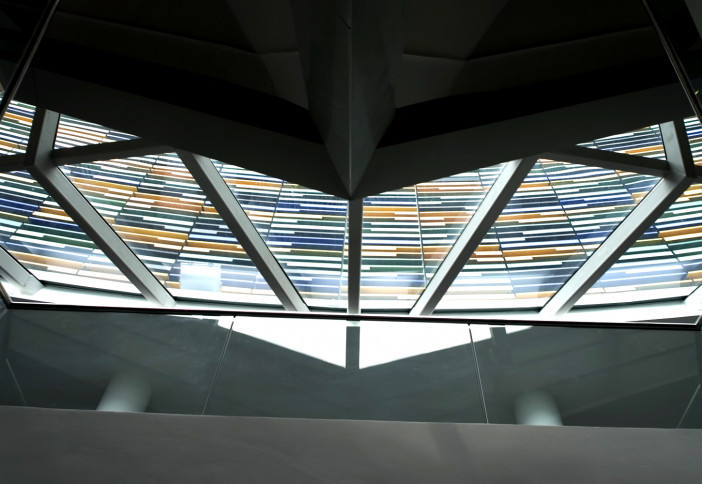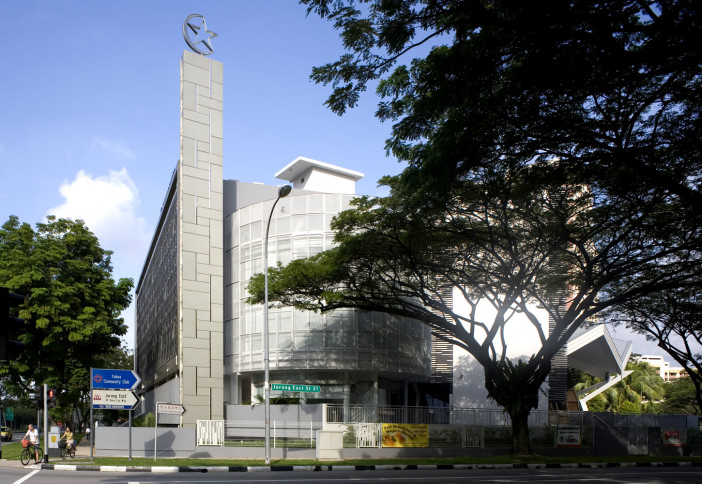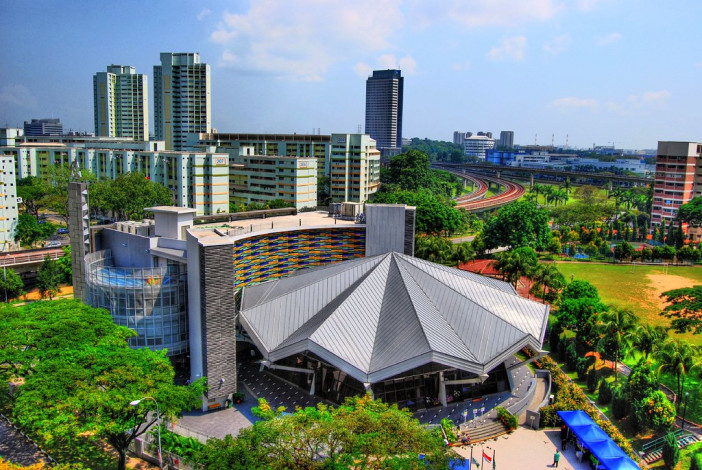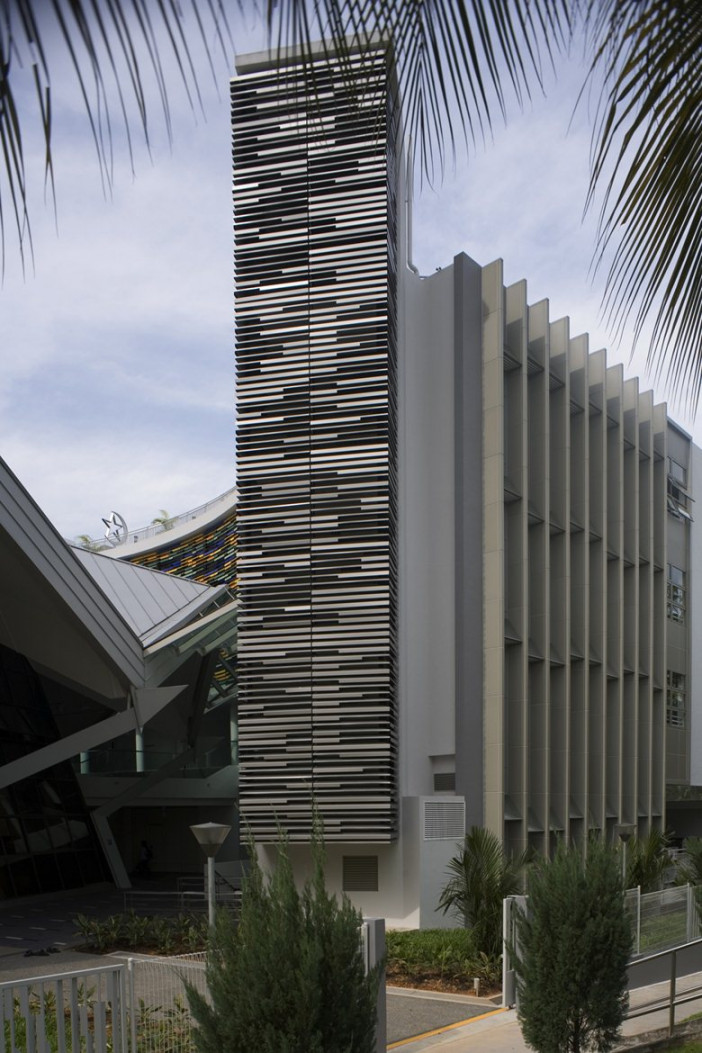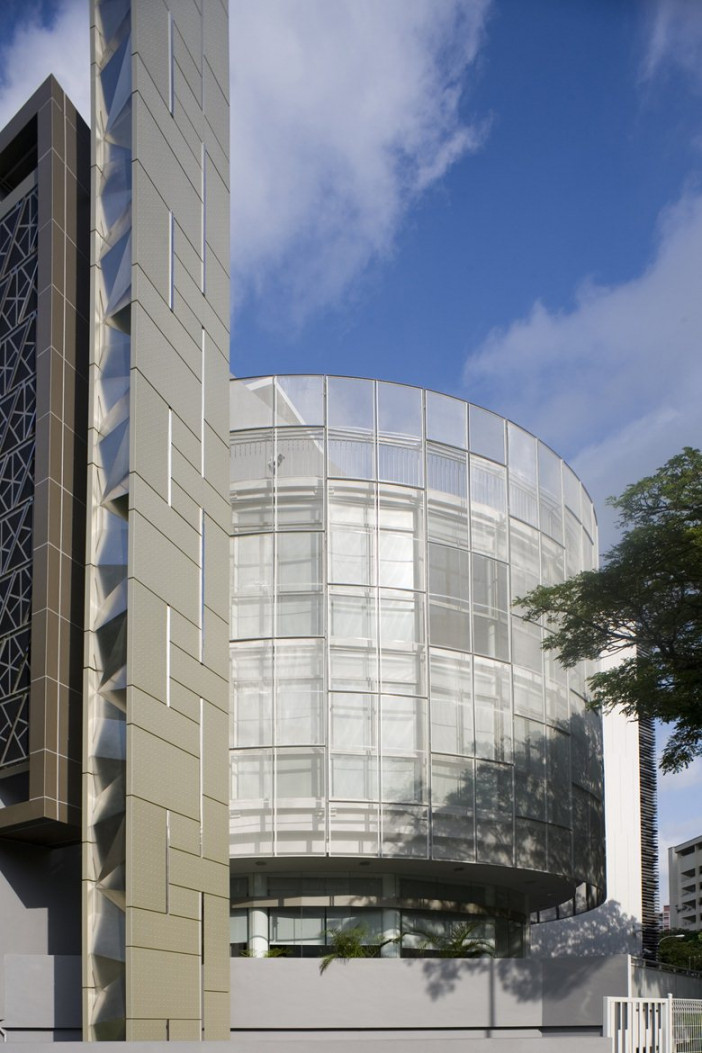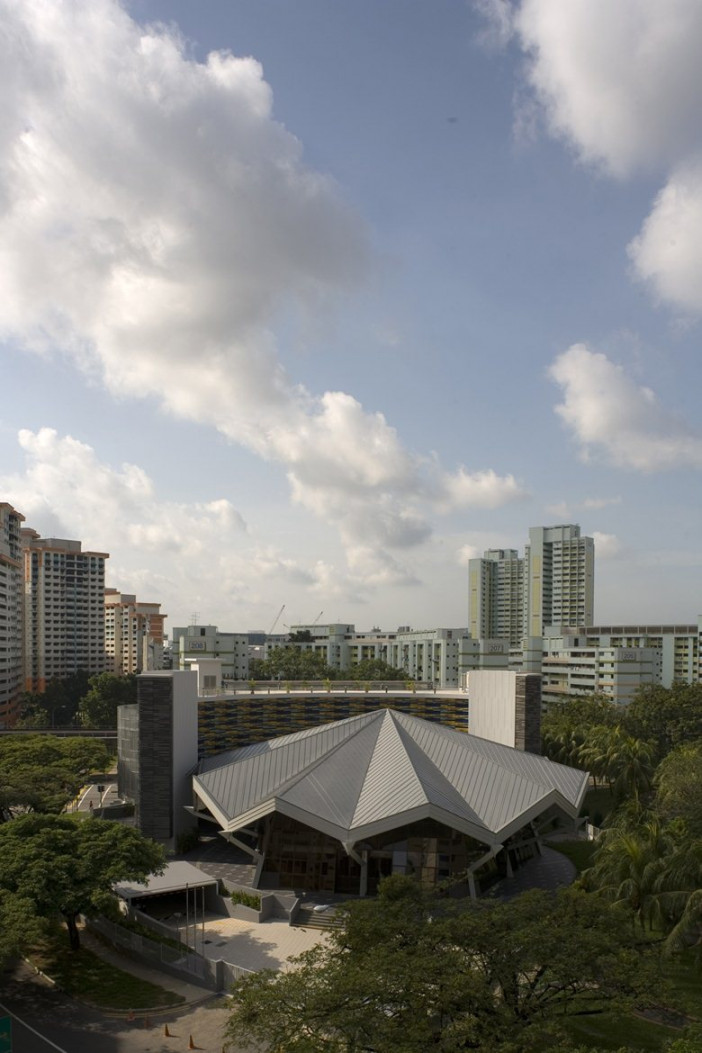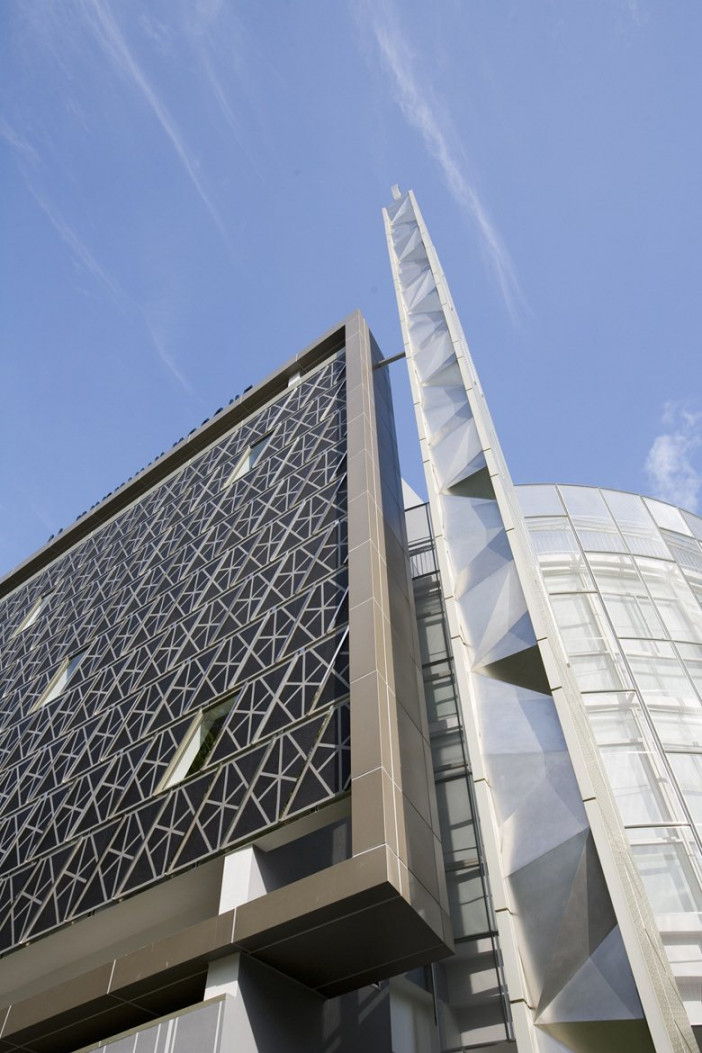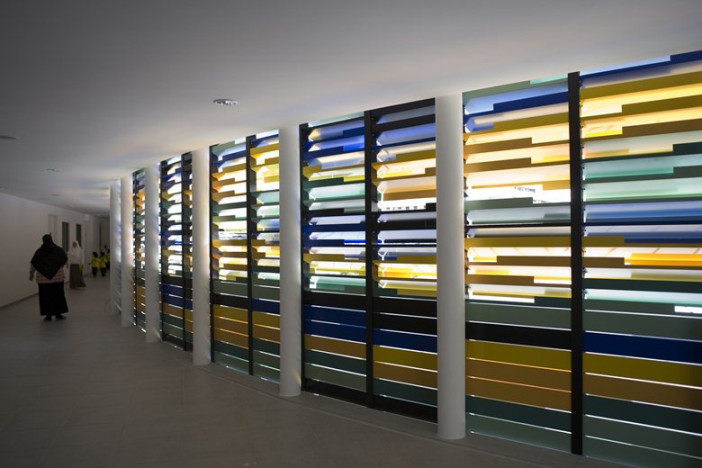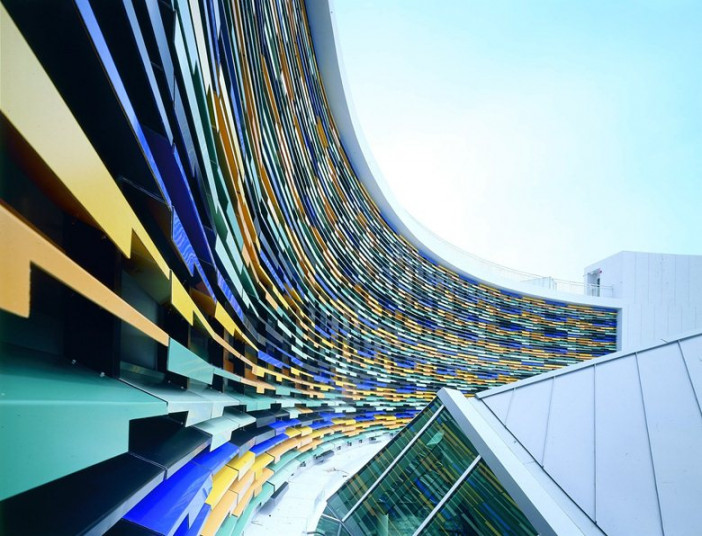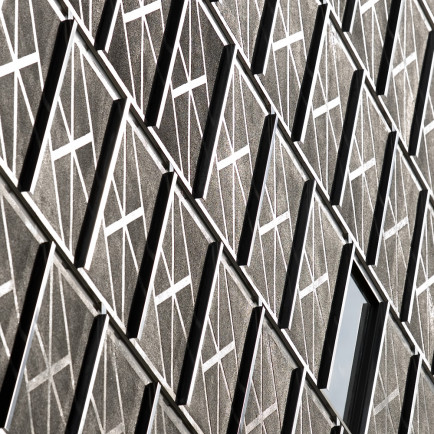Masjid Al-Mukminin
History
Al-Mukminin
Mosque was officially launched on 7 June 1987 by Dr Ahmad Mattar. It was
constructed under Phase 2 of the Mosque Building Fund (MBF) scheme. Located at
Jurong East HDB New Town, it has since undergone a major upgrading from a
2-story to a 4-story building, which was completed in June 2006. Al-Mukminin
Mosque is under the West Mosque Cluster.
The
works called for an extension block to the existing pentagonal shaped main
prayer hall.
The
strategy was to create a new block that would act as a backdrop to accentuate
and not challenge the visual presence of the existing prayer hall. The curved
block houses the madrasah (Islamic School). A horizontal louver system,
designed to echo Islamic arabesque patterns, uses earth and natural colors
which merge into one another. From within the corridors as well as seen as a
backdrop, the curved screen captivates with its play of colors and shadows as
well as provide natural ventilation into the spaces. The new facade facing the
main road/MRT carries yet another modern arabesque pattern, this time taking
into consideration the visual perception of someone on a fast-moving LRT/MRT
train
(References
: https://www.archilovers.com/projects/71928/al-mukminin-mosque.html#info)
(References:
https://www.almukminin.sg/blog)
Description
The mosque in Singapore is a sort of community center, housing a
madrasah, conference halls, social spaces and offices plus the main prayer
hall, used day and night. The madrasah extension maximizes to the limit what
the planning authorities can allow – 4 stories and a basement. Existing Context
The most important is the existing prayer hall with its prominent fan-shaped
roof.
The architects’ choices: to enhance its independence or
reverentially engulfing it. Their choice is the latter - flaring open the ends
of the corridors of the new block and stretching its new staircases to unwrap
the old hall. The staircases flanking the opposite ends of the new block are
expressed as sturdy towers, and portals of the new wing.
The widened ends of the corridors are also used as external spaces
of the classrooms. Arabesque of Islamic Colors As Backdrop Beyond space
provision, it seeks to explore the universality of Islamic principles in
creating buildings that transcends artificial cultural barriers. The use of
arabesque patterns and denationalization techniques are highly evident in this
project. The underlying exploration in the project is the use of Islamic colors
which primarily focus on ‘earth’ colors such as color of water, sky and ground.
The juxtaposition of the
multi-shade colors on the aluminum louvers are designed to create a mottled
effect from far, to create materialization, an ancient technique often used in
Islamic buildings. The intricate composition of turquoise, yellow and blue -
dominant colors in Islamic buildings - convey a sense of depth and animation to
a flat surface, also visible through the skylight gap between the old and new
block. This sweeping curve of colored metallic louvers act as a new backdrop to
the original fan shaped roof.
Climatic Response The aluminium screen louvers along the curved
facade are designed as bent sheets with deep overlapping overhang. This
effectively screen off the harsh afternoon Sun whilst allowing ventilation into
the corridor behind and not allow monsoonal rains to beat in, which is common
in the tropical climate. The is important as corridor adjacent to the madrasah
classrooms is used as spill over activity areas.
The irregular random cut out from the aluminium screen louvers
also allow the children to peep out in the spirit of adventure and play while
the juxtaposition of colors (the bent aluminium louvers are colored on both
sides internally and externally) act as a color back drop for the madrasah
spill over areas.
(References: https://www.almukminin.sg/blog)
Details
الموقع
271 Jurong East Street 21, Singapore 609603
المعماري
الرسومات المعمارية
الخريطة
History
Al-Mukminin
Mosque was officially launched on 7 June 1987 by Dr Ahmad Mattar. It was
constructed under Phase 2 of the Mosque Building Fund (MBF) scheme. Located at
Jurong East HDB New Town, it has since undergone a major upgrading from a
2-story to a 4-story building, which was completed in June 2006. Al-Mukminin
Mosque is under the West Mosque Cluster.
The
works called for an extension block to the existing pentagonal shaped main
prayer hall.
The
strategy was to create a new block that would act as a backdrop to accentuate
and not challenge the visual presence of the existing prayer hall. The curved
block houses the madrasah (Islamic School). A horizontal louver system,
designed to echo Islamic arabesque patterns, uses earth and natural colors
which merge into one another. From within the corridors as well as seen as a
backdrop, the curved screen captivates with its play of colors and shadows as
well as provide natural ventilation into the spaces. The new facade facing the
main road/MRT carries yet another modern arabesque pattern, this time taking
into consideration the visual perception of someone on a fast-moving LRT/MRT
train
(References
: https://www.archilovers.com/projects/71928/al-mukminin-mosque.html#info)
(References:
https://www.almukminin.sg/blog)
Description
The mosque in Singapore is a sort of community center, housing a
madrasah, conference halls, social spaces and offices plus the main prayer
hall, used day and night. The madrasah extension maximizes to the limit what
the planning authorities can allow – 4 stories and a basement. Existing Context
The most important is the existing prayer hall with its prominent fan-shaped
roof.
The architects’ choices: to enhance its independence or
reverentially engulfing it. Their choice is the latter - flaring open the ends
of the corridors of the new block and stretching its new staircases to unwrap
the old hall. The staircases flanking the opposite ends of the new block are
expressed as sturdy towers, and portals of the new wing.
The widened ends of the corridors are also used as external spaces
of the classrooms. Arabesque of Islamic Colors As Backdrop Beyond space
provision, it seeks to explore the universality of Islamic principles in
creating buildings that transcends artificial cultural barriers. The use of
arabesque patterns and denationalization techniques are highly evident in this
project. The underlying exploration in the project is the use of Islamic colors
which primarily focus on ‘earth’ colors such as color of water, sky and ground.
The juxtaposition of the
multi-shade colors on the aluminum louvers are designed to create a mottled
effect from far, to create materialization, an ancient technique often used in
Islamic buildings. The intricate composition of turquoise, yellow and blue -
dominant colors in Islamic buildings - convey a sense of depth and animation to
a flat surface, also visible through the skylight gap between the old and new
block. This sweeping curve of colored metallic louvers act as a new backdrop to
the original fan shaped roof.
Climatic Response The aluminium screen louvers along the curved
facade are designed as bent sheets with deep overlapping overhang. This
effectively screen off the harsh afternoon Sun whilst allowing ventilation into
the corridor behind and not allow monsoonal rains to beat in, which is common
in the tropical climate. The is important as corridor adjacent to the madrasah
classrooms is used as spill over activity areas.
The irregular random cut out from the aluminium screen louvers
also allow the children to peep out in the spirit of adventure and play while
the juxtaposition of colors (the bent aluminium louvers are colored on both
sides internally and externally) act as a color back drop for the madrasah
spill over areas.
(References: https://www.almukminin.sg/blog)


